Space News
Mensjournal
385

Likelihood of Major Asteroid Hitting Earth Just Got Upgraded Again
- A recently discovered asteroid, 2024 YR4, has the highest odds of colliding with Earth to date, with a 2.6 percent chance of impact in 2032.
- The odds have increased from 1-in-83 to 1-in-38, according to NASA data. The European Space Agency places the odds slightly lower, at 2.41 percent.
- The estimated size of the asteroid is 130 to 300 feet in diameter, and the potential energy released upon impact could be equivalent to 7.7 megatonnes of TNT.
- NASA plans to observe the asteroid in March with the James Webb Space Telescope to gather more information about its size and potential impact.
Read Full Article
23 Likes
Earthsky
27

Image Credit: Earthsky
The Milky Way’s black hole flickers and flares
- The Milky Way's black hole, Sagittarius A*, has been observed emitting flares and flickers by NASA's James Webb Space Telescope.
- These flares are compared to solar flares but are more dramatic due to the extreme environment around a black hole.
- The activity of the black hole appears random, with bright eruptions and faint flickers detected.
- The study, led by Farhad Yusef-Zadeh of Northwestern University, reveals constant changes and bursts of brightness in Sagittarius A*.
- The observations show a high level of activity ranging from short flickers to bright eruptions.
- The findings could help understand black hole dynamics and the evolution of the Milky Way.
- Two processes are suspected to cause short bursts and longer flares in the black hole, likely involving disturbances in the accretion disk.
- Magnetic reconnection events and plasma compression are thought to be responsible for the bright flares seen.
- Observations with Webb's NIRCam showed a slight time delay in brightness changes between different wavelengths.
- Future observations aim to obtain uninterrupted views of Sagittarius A* over extended periods to reduce noise and reveal finer details.
Read Full Article
1 Like
Medium
275

Dress nicely
- Invest in nice clothes and shoes.
- Keep your hair well-groomed.
- Buy some nice cologne and a nice watch.
- You don't have to buy designer labels, just make it seem like you did.
Read Full Article
16 Likes
Digitaltrends
326
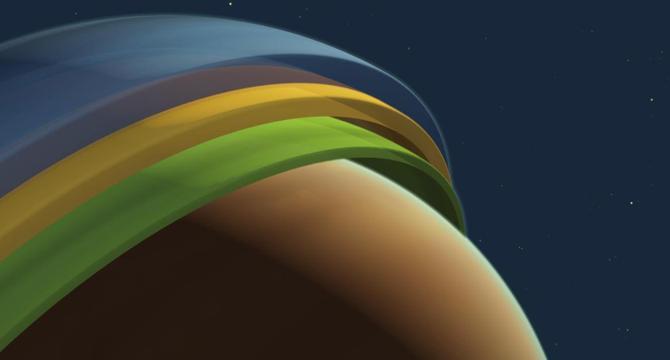
Image Credit: Digitaltrends
This distant exoplanet has an atmosphere ‘like something out of science fiction’
- Exoplanet WASP-121b has a unique atmosphere characterized by extreme surface temperatures and powerful winds carrying metals like iron and titanium.
- Using the European Southern Observatory's Very Large Telescope (VLT), astronomers created a 3D view of the exoplanet's atmosphere and found that it behaves in ways that challenge our understanding of weather not only on Earth but on all planets.
- The planet's atmosphere has a complex structure with separate layers of iron, sodium, and hydrogen moving in different directions, resulting in a never-before-seen climate.
- The observations were made using VLT's ESPRESSO instrument, which allowed researchers to track the movement of elements and build a 3D model of the planet's atmosphere.
Read Full Article
19 Likes
Discover more
Popsci
307

Image Credit: Popsci
Astrophysicists surprised by light show around the Milky Way’s supermassive black hole
- Astrophysicists using NASA's James Webb Space Telescope discovered constant flares from the accretion disk around the supermassive black hole at the center of the Milky Way.
- Sagittarius A* is significant due to its mass equivalent to billions of suns and proximity, allowing for detailed observations of gas and dust flow.
- Flares varying in duration and brightness were observed, with the black hole displaying continuous activity without a steady state.
- Studying Sagittarius A* can provide insights into black hole behavior, interactions with surroundings, and galaxy evolution.
- The team monitored the black hole over 48 hours using JWST's NIRCam, revealing ongoing fireworks with significant flares and sub-flares.
- The unpredictability and randomness of the black hole's activity, including sudden bursts of brightness, were noted.
- Minor disturbances within the accretion disk generate faint flickers, while longer and brighter flares are akin to tidal waves caused by significant events.
- Events similar to solar flares and magnetic reconnection were observed, showcasing the extreme and energetic nature around black holes.
- The team found a time delay in measurements at different wavelengths, providing insights into particle energy loss during flares.
- Future studies aim to observe Sagittarius A* for longer periods using JWST to uncover finer details and potential periodicity in the flares.
Read Full Article
18 Likes
Livescience
124
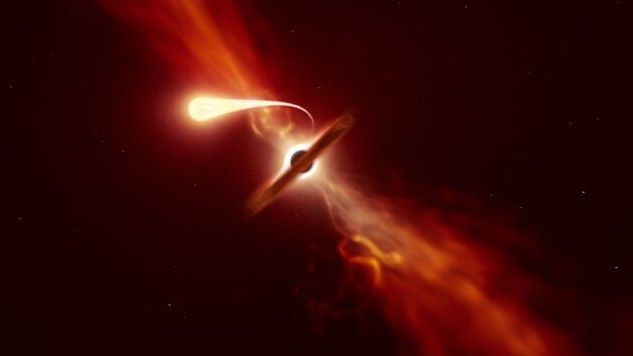
Image Credit: Livescience
Our galaxy's monster black hole is spitting out mysterious flares, James Webb telescope reveals
- Astronomers using the James Webb Space Telescope observed our galaxy's supermassive black hole, Sagittarius A*, and found constant flares erupting from the gas swirling around it.
- Sagittarius A* is 26,000 light-years away, 4 million times the mass of the sun, and 14.6 million miles wide.
- The black hole's unique and active nature was observed over 2023-2024, with constant changes in activity noted during multiple observations.
- Despite being a small fraction of the Milky Way's mass, Sagittarius A* influences the galaxy's evolution by sucking in and ejecting matter.
- JWST's observations revealed 5-6 big flares per day from the black hole, showing random and unpredictable activity.
- The flares may result from compression in the accretion disk and clashes of magnetic-field lines within the disk.
- Flares were observed dimming faster at shorter wavelengths, indicating energy loss by particles in the flares swirling around magnetic-field lines.
- Future research aims to observe the black hole for longer periods to reduce noise and explore other features in its surroundings.
- Understanding these flares and their sources can provide insights into the dynamics of supermassive black holes and their impact on galaxies.
- Observing Sagittarius A* with JWST presents an opportunity to unlock more mysteries surrounding the behavior and nature of these cosmic monsters.
Read Full Article
7 Likes
Universe Today
146

Image Credit: Universe Today
Liquid Mirrors Can Only Point Straight Up. Could Magnets Solve This Problem?
- Liquid mirror telescopes use a thin layer of mercury and rotation to form a parabolic surface, making them cost-effective but limited in function.
- A recent study proposes using a ferrofluid and electromagnets to improve liquid mirror telescopes, allowing for some degree of orientation and shape retention.
- This method could be effective for space telescopes in environments with weaker gravity, such as on the Moon.
- Although the feasibility has been explored, current electric circuitry needs improvement for practical implementation.
Read Full Article
8 Likes
Universe Today
427

Image Credit: Universe Today
Mercury Completes the Planetary Parade at Dusk
- Mercury joins the planetary parade at dusk, completing the sunset lineup.
- Seeing all naked eye planets at once is a rare event, with Mercury now visible low to the west after sunset.
- Mercury passes north of Saturn on February 25th, with the Moon occulting Mercury on March 1st.
- Venus and Mercury race towards inferior conjunction next month, emerging into the dawn sky in late March.
- Mars shines brightly in Gemini, while Jupiter sits high in the sky in Taurus at dusk.
- Saturn, the outermost classical planet, presents a challenge as it sits low to the west.
- Completing the planetary quest involves observing Uranus and Neptune, the outer ice giant worlds.
- Neptune and Uranus are visible in Taurus and Pisces respectively, with Neptune being discovered using math and deduction.
- The celestial drama unfolds in March as Saturn leaves the scene and Mercury and Venus appear in the dawn sky.
- The upcoming eclipse seasons in 2025 include a partial solar eclipse on March 29th and a total lunar eclipse on the 14th.
Read Full Article
25 Likes
Nasa
395

Past Annual Highlights of Results from the International Space Station Publications
- This is the eighth annual report highlighting the results of research conducted on the International Space Station (ISS) from October 1, 2022, to September 30, 2023.
- The report provides an overview of research results published from investigations operated on the space station during this period.
- Similar annual reports have been published for the previous years, highlighting the research results from investigations on the ISS.
- The annual reports are available in PDF format for each respective year.
Read Full Article
23 Likes
Nasa
229

Image Credit: Nasa
Annual Highlights of Results 2024: Key Takeaways, Introduction, and Bibliometric Analyses
- In FY-24, a total of 361 publications were collected, with over 80% from research sponsored by NASA and JAXA, primarily in Earth and Space science.
- Derived publications indicated a 39% return on investment, with 4,438 publications gathered since station inception.
- Top-tier publication growth has outpaced regular publication growth, with 80% published in the last seven years.
- International collaboration in station research has grown, with about 40% of research being a collaboration between countries.
- Of nearly 4,000 investigations, 59% are marked as completed, producing the most scientific results directly on station.
- Space station research covers six major disciplines, contributing to diverse scientific endeavors with significant impact and quality.
- Bibliometric analyses demonstrate the importance and benefits of station research, which leads to advancements in space exploration, scientific discoveries, and benefits for humanity.
- Results from station investigations range from plant adaptation for sustainable food production on other celestial bodies to the behavior of oil-in-water drops in microgravity.
- The research conducted on the International Space Station bridges academic, commercial, and international collaborations to further science and innovation.
- The study highlights the growth, impact, quality, and diversity of research conducted on the International Space Station, showcasing the global significance of this endeavor.
Read Full Article
13 Likes
Nasa
192

Image Credit: Nasa
2024 Annual Highlights of Results from the International Space Station Science
- The 2024 Annual Highlights of Results from the International Space Station is now available.
- Over 350 publications were reported between October 2023 and September 2024, with significant international collaboration.
- Key scientific findings include improved space debris detection algorithms, visuospatial processing before and after spaceflight, and metabolic changes during fasting intervals.
- The research conducted on the International Space Station continues to advance space commercialization and benefit humankind.
Read Full Article
11 Likes
Nasa
408
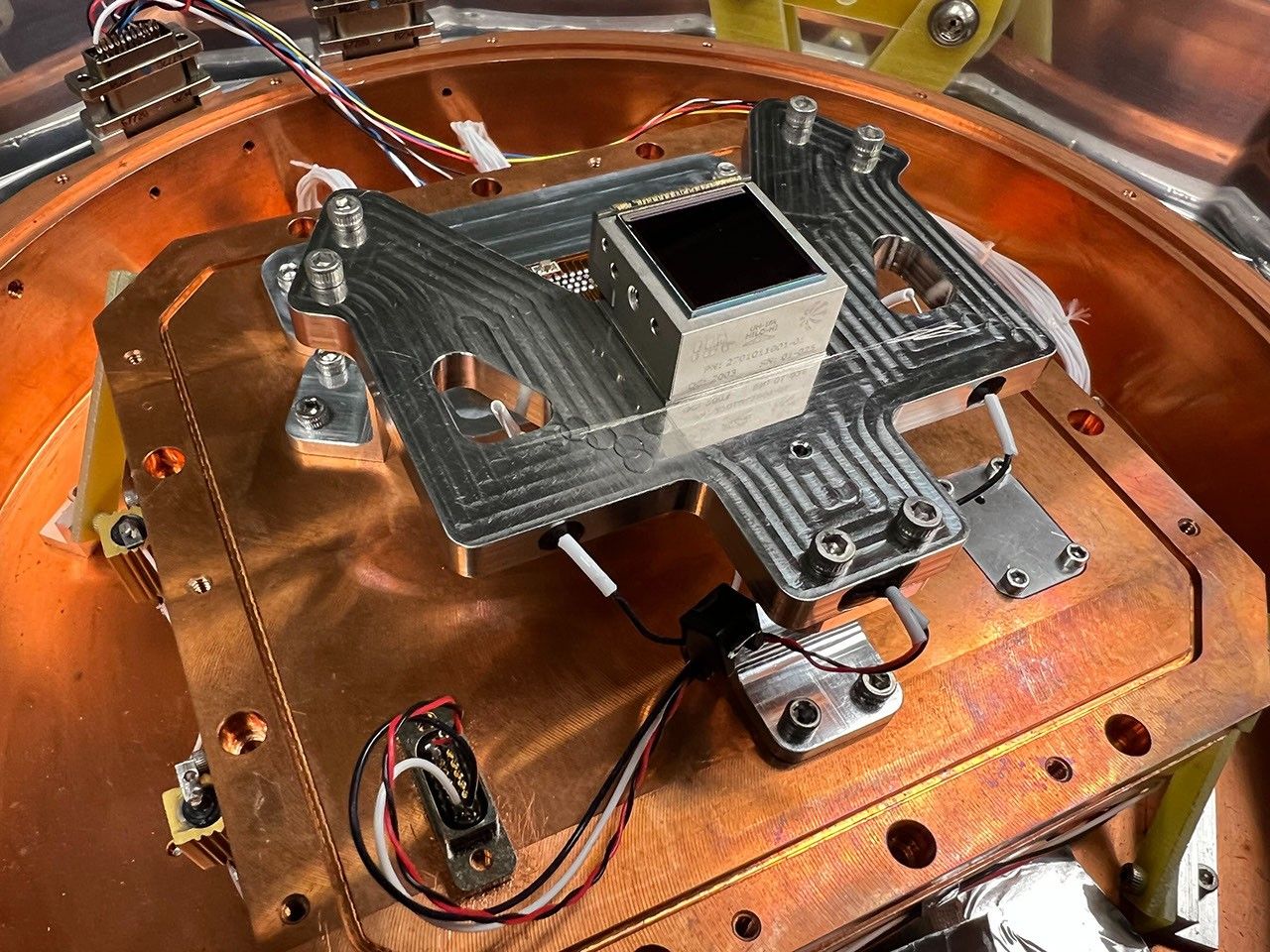
Image Credit: Nasa
Ultra-low-noise Infrared Detectors for Exoplanet Imaging
- Direct imaging and characterization of Earth-like exoplanets are key to understanding their potential habitability, but come with extreme technical challenges due to the faintness of planetary light and proximity to their parent stars.
- Ultra-sensitive detectors are essential for capturing the low level of light emitted from exoplanets, particularly in the infrared spectrum where biosignature gases have significant effects.
- Researchers at the University of Hawai’i are developing avalanche photodiode arrays as highly sensitive detectors, with signal amplification reducing noise levels for improved detection capabilities.
- These detectors feature a new design with graded semiconductor bandgap, mesa pixel geometry, and read-out integrated circuit for enhanced noise performance and shorter readout times.
- Recent sensors, more than ten times larger than previous ones, with improved circuitry, have shown promising results in on-sky testing using the University of Hawai’i’s telescope.
- The next generation of sensors aims to be four times larger, meeting size requirements for future missions like the Habitable Worlds Observatory to image and characterize Earth-like exoplanets.
- Project Lead: Dr. Michael Bottom, University of Hawai’i. Sponsoring Organization: NASA Strategic Astrophysics Technology (SAT) Program.
- Efforts in developing ultra-low-noise infrared detectors are crucial for advancing exoplanet imaging and potentially discovering habitable exoplanets beyond our solar system.
- The new sensor technology has shown significant improvements in sensitivity and noise reduction, paving the way for more precise and detailed observations of distant exoplanets.
- These advancements could revolutionize our understanding of exoplanetary atmospheres and the search for potential extraterrestrial life in the universe.
Read Full Article
24 Likes
Livescience
0
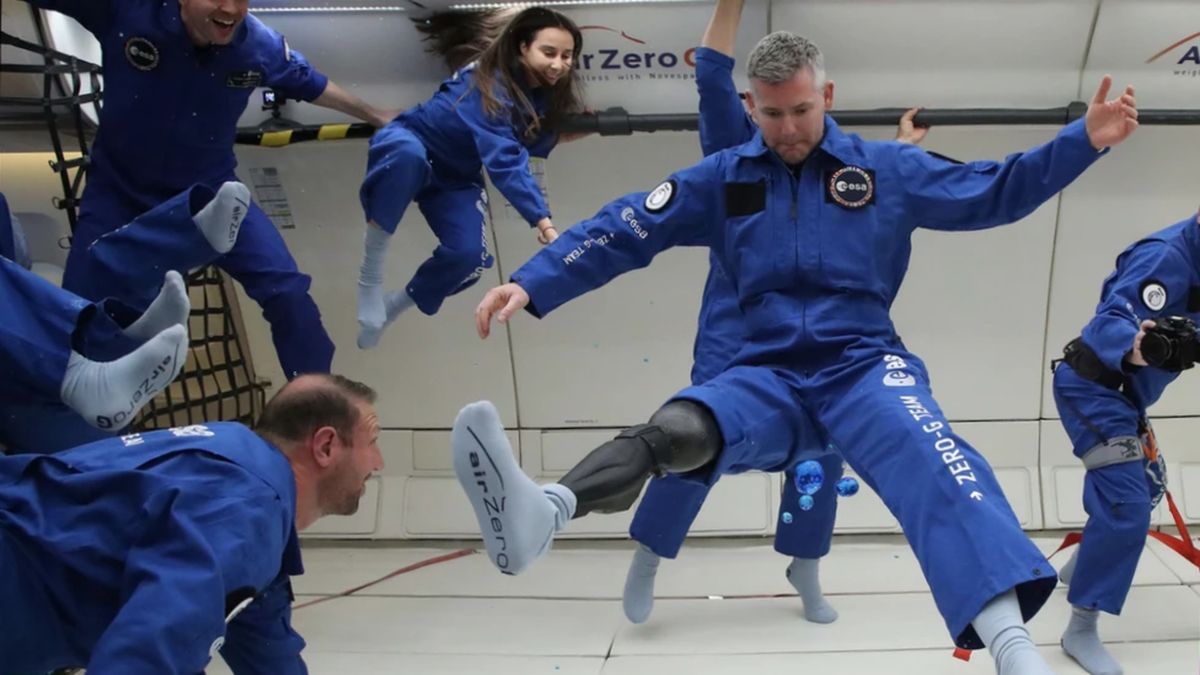
Image Credit: Livescience
'Hugely proud': UK Paralympian becomes 1st disabled astronaut to be cleared for ISS mission
- John McFall, a former U.K. Paralympian, has been cleared for a future mission to the International Space Station (ISS), becoming the first person with a physical disability to travel to space.
- McFall, an orthopedic surgeon, had his right leg amputated above the knee and joined the European Space Agency (ESA) in 2022 to assess the feasibility of a prosthesis user becoming an ISS crew member.
- On February 14, 2020, ESA announced that McFall passed the necessary medical tests and is now on the waiting list for a future ISS mission.
- ESA has expressed its plan to send a disabled person to the ISS before it is decommissioned, which is expected to happen after 2030.
Read Full Article
Like
Nasa
307

Image Credit: Nasa
Station Science Top News: Feb. 14, 2025
- Researchers report detailed physical properties of different types of corona discharges, including single- and multi-pulse blue discharges linked to powerful but short-lived electrical bursts near the tops of clouds.
- An ESA instrument, Atmosphere-Space Interactions Monitor (ASIM), used to study thunderstorms provides insights into their role in Earth's atmosphere and climate, including the mechanisms behind the creation of lightning.
- Researchers conclude that the space station's ECOSTRESS instrument yields highly accurate sea surface temperature data, which has potential use in studies of biological and physical oceanography to evaluate regional and local effects of climate change.
- Researchers report detailed observations and analysis of emissions from an exceptionally bright gamma ray burst (GRB) detected by the station's ASIM and other satellite and ground-based instruments, which could be useful in determining various properties of GRBs and how they change during different phases.
Read Full Article
18 Likes
Livescience
22
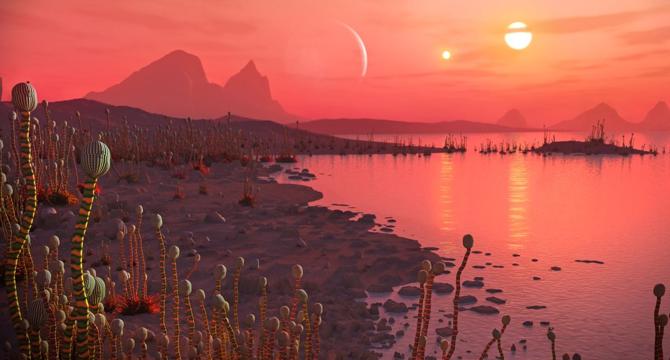
Image Credit: Livescience
'Perhaps it's only a matter of time': Intelligent life may be much more likely than first thought, new model suggests
- A new model suggests that intelligent life may be much more likely than previously thought.
- The model challenges the assumption that human intelligence is an improbable outcome of evolution.
- The researchers propose that human life emerged when the planetary conditions were right, rather than being a rare accident.
- The research has significant implications for our understanding of the history of life on Earth and the likelihood of finding intelligent life elsewhere in the universe.
Read Full Article
1 Like
For uninterrupted reading, download the app